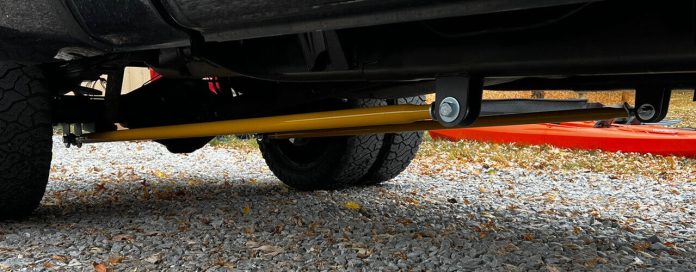Ladder bars, also known as traction bars or traction ladder bars, are crucial components in the automotive industry, particularly for trucks and off-road vehicles. These bars play a significant role in improving stability, reducing wheel hop, and enhancing overall driving performance. In this article, we will explore the functionality, benefits, and types of ladder bars, providing a comprehensive understanding of their importance in vehicle dynamics.
Understanding Ladder Bars
Ladder bars are suspension components designed to prevent axle rotation, especially in high-performance vehicles. They consist of two parallel bars that run from the axle to the frame of the vehicle, forming a ladder-like structure. By limiting axle movement, ladder bars improve traction, reduce wheel hop, and enhance overall vehicle stability.
How Ladder Bars Work
Ladder bars work by connecting the rear axle to the frame of the vehicle, effectively limiting the axle’s ability to rotate. This connection prevents excessive axle movement, which can lead to wheel hop and axle wrap. Wheel hop occurs when the tires lose traction and regain it rapidly, causing the vehicle to bounce. Axle wrap, on the other hand, happens when the axle twists under hard acceleration, affecting the vehicle’s stability and performance.
Benefits of Ladder Bars
- Improved Traction: Ladder bars enhance traction by reducing wheel hop and axle wrap, ensuring that power is effectively transferred to the wheels.
- Enhanced Stability: By limiting axle movement, ladder bars improve the vehicle’s stability, especially during high-speed maneuvers or off-road driving.
- Reduced Wear and Tear: Ladder bars reduce stress on the suspension system, prolonging its life and improving overall durability.
- Better Performance: With improved traction and stability, vehicles equipped with ladder bars often exhibit better acceleration and handling, enhancing overall performance.
Types of Ladder Bars
- Single Bar Ladder Bars: These bars consist of a single bar that connects the axle to the frame, providing basic traction control.
- Dual Bar Ladder Bars: Dual bar ladder bars feature two bars that connect the axle to the frame, offering better stability and control compared to single bar designs.
- Triangulated Ladder Bars: Triangulated ladder bars use a triangular design to connect the axle to the frame, providing superior traction control and stability.
Installation and Maintenance
Installing ladder bars requires some mechanical knowledge and tools. It is essential to follow the manufacturer’s instructions for proper installation. Regular maintenance, including checking for loose bolts and greasing moving parts, is crucial to ensure the bars function correctly.
Conclusion
Ladder bars are essential components for vehicles seeking improved traction, stability, and performance. By understanding their functionality and benefits, vehicle owners can make informed decisions regarding their installation. Whether for off-road adventures or enhancing on-road performance, ladder bars play a crucial role in improving the overall driving experience.
